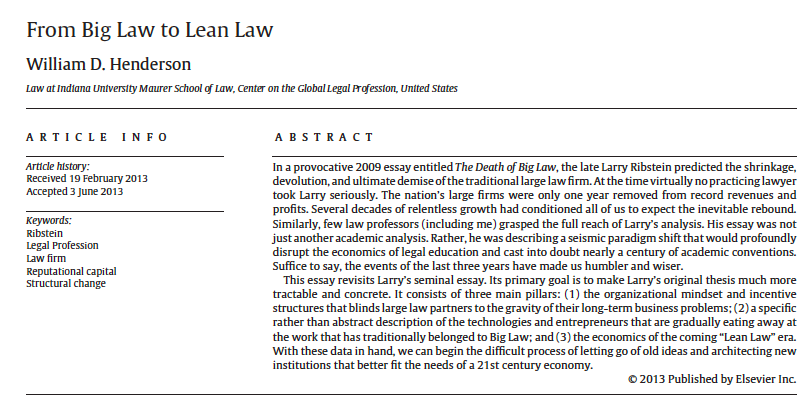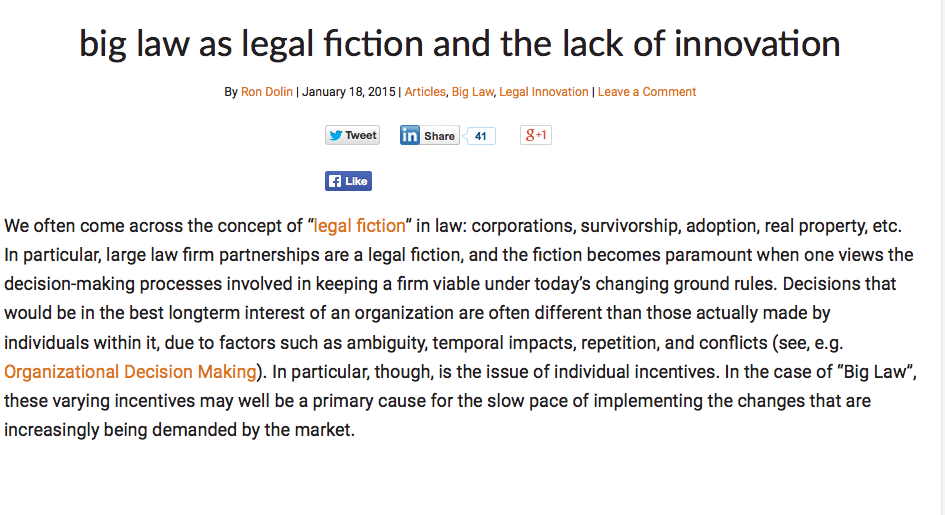
A reading about the future of legal practice in the US: From Big Law to Lean Law by William D. Henderson via SSRN.
The abstract:
In a provocative 2009 essay entitled The Death of Big Law, the late Larry Ribstein predicted the shrinkage, devolution, and ultimate demise of the traditional large law firm. At the time virtually no practicing lawyer took Larry seriously. The nation’s large firms were only one year removed from record revenues and profits. Several decades of relentless growth had conditioned all of us to expect the inevitable rebound. Similarly, few law professors (including me) grasped the full reach of Larry’s analysis. His essay was not just another academic analysis. Rather, he was describing a seismic paradigm shift that would profoundly disrupt the economics of legal education and cast into doubt nearly a century of academic conventions. Suffice to say, the events of the last three years have made us humbler and wiser.
This essay revisits Larry’s seminal essay. Its primary goal is to make Larry’s original thesis much more tractable and concrete. It consists of three main pillars: (1) the organizational mindset and incentive structures that blinds large law partners to the gravity of their long-term business problems; (2) a specific rather than abstract description of the technologies and entrepreneurs that are gradually eating away at the work that has traditionally belonged to Big Law; and (3) the economics of the coming “Lean Law” era. With these data in hand, we can begin the difficult process of letting go of old ideas and architecting new institutions that better fit the needs of a 21st century economy.


